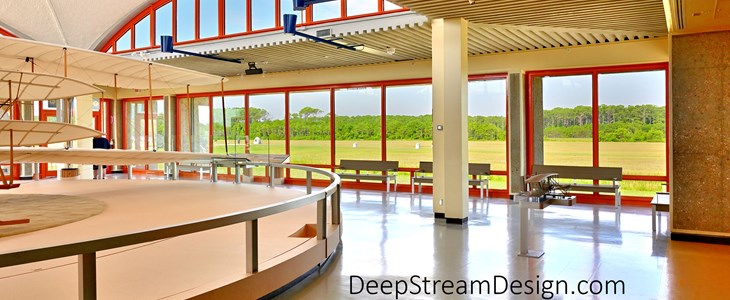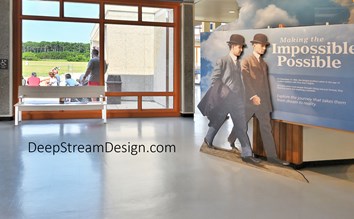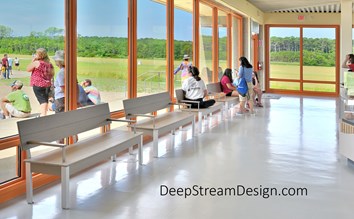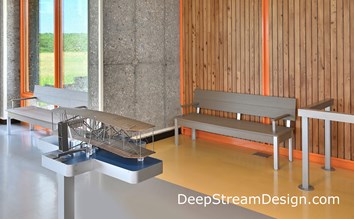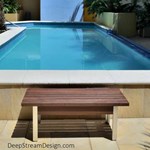Wright Brothers National Monument
Kill Devil Hills, NC
Project Details
- Location
- Kill Devil Hills, NC
The Wright Brothers National Monument visitor center was considered an ultra-modern design when originally built in the 1920’s. It was part of the Park Service’s “Mission 66” program dedicated to modernization and expansion. The architectural firm of Rogers & Poor were the ones behind it’s unique art deco style. In 1966, it was inducted into the U.S. National Register of Historic Places.
The visitor center is recently renovated. DeepStream Design’s modern maintenance free museum benches with backs and arms were chosen for their ergonomic seating, lifetime structural warranty, and 100% recycled and recyclable content. Hand crafted in America from 316-stainless steel, marine anodized aluminum and recycled plastic benches these modern benches rest tired visitors and are climbed on by hundreds of thousands of children that visit every year without wear and tear or costly maintenance. Even so, all parts are replaceable.
Although first in flight people think the Wrights invented the airplane. Airplanes with similarities of configuration to the ones the Wrights flew were already in existence. However, they didn’t work. They lacked both a way to lift off from level ground and a way to control them once they were in the air.
The Wrights invented a system that helped the plane not only lift off, but remain in control once airborne. This was the true turning point for both aviation and the Brothers. To this day, there is no better system for controlling flight than the one the Wrights invented in 1903. Even in modern aircraft, the systems are all just updated variations of the Wrights original system. Thanks to their patent, the Wrights received 20% on the sale of every new aircraft regardless of whether the buyer was commercial, private, or the government.
This was the first federal park to have a permanent public structure. Prior to the Wright Memorial’s Visitor Center, National Parks didn’t have public structures on them. Instead, they had ranger stations, entrances, and other similar outcroppings, but no buildings for the public to enjoy. When they created Wright Memorial, they realized that nature and the boulder markers alone weren’t going to be enough to tell the Wright’s story, so they commissioned a museum to tell the rest.



